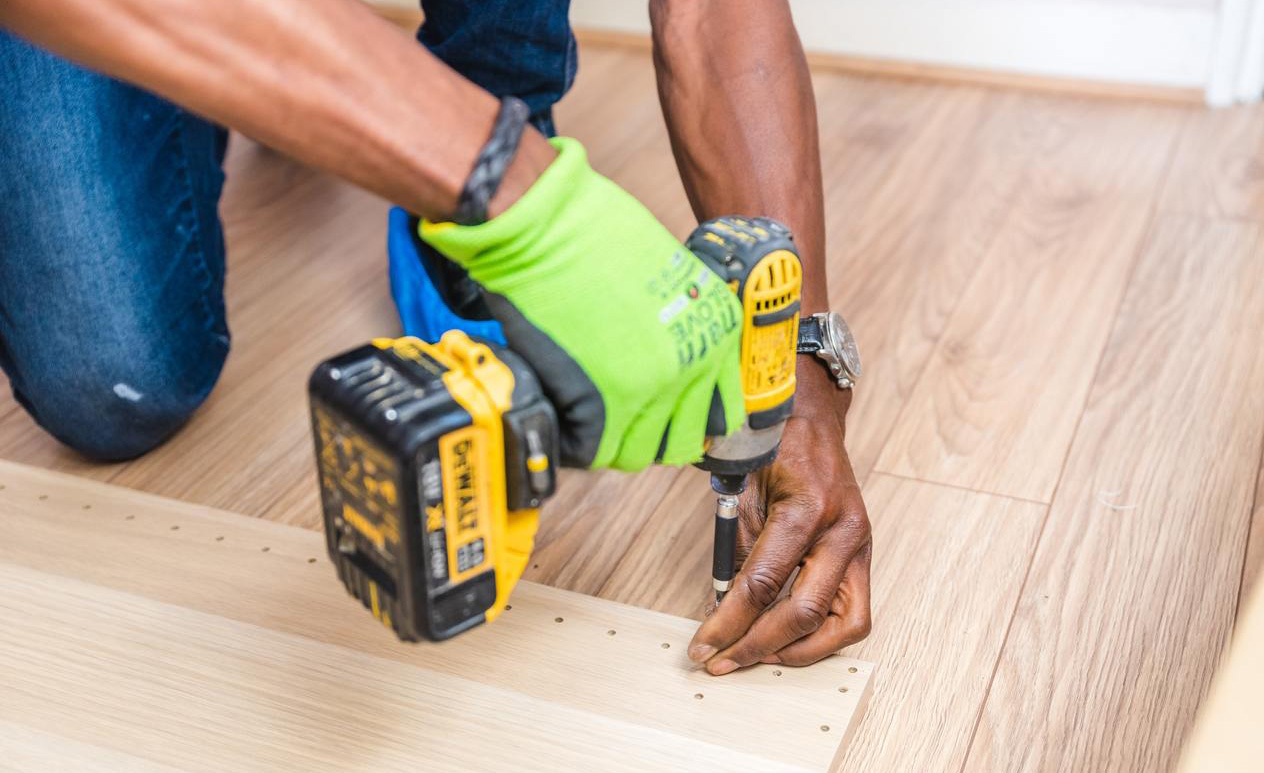

Articles
Beginner-Friendly Power Tools To Buy First
Modified: January 19, 2024
Looking for advice on which power tools to invest in as a beginner? Read our informative articles for helpful tips and recommendations.
(Many of the links in this article redirect to a specific reviewed product. Your purchase of these products through affiliate links helps to generate commission for Storables.com, at no extra cost. Learn more)
Introduction
Power tools have become an essential part of the modern workshop or DIY enthusiast’s arsenal. Whether you’re a professional contractor or a hobbyist, having the right set of power tools can make a world of difference in the efficiency and quality of your work. But with so many options available on the market, it can be overwhelming to figure out which power tools to buy first.
However, investing in the right power tools is crucial, as they can greatly enhance your productivity and allow you to tackle a wide range of projects with ease. From drilling holes and driving screws to cutting through various materials and shaping wood, power tools offer efficiency, precision, and versatility that can’t be matched by manual tools.
When choosing which power tools to buy, there are several factors to consider. Think about the type of projects you typically work on, your skill level, and your budget. It’s also important to invest in high-quality tools from reputable brands, as they are built to last and offer better performance.
In this article, we will discuss the top power tools that you should consider buying first. These tools are fundamental and versatile, making them suitable for a wide range of tasks. Whether you’re a beginner or a seasoned pro, having these essential power tools in your collection will ensure that you’re well-equipped to take on any project that comes your way.
Key Takeaways:
- Invest in high-quality power tools from reputable brands to enhance efficiency, precision, and versatility in woodworking and DIY projects. Prioritize safety and gradually expand your collection for exceptional results.
- The top power tools to prioritize include the cordless drill, circular saw, jigsaw, random orbital sander, angle grinder, power drill, impact driver, router, miter saw, and reciprocating saw. Each tool offers unique features and benefits for a wide range of tasks.
Importance of Power Tools
Power tools have revolutionized the way we approach DIY projects and professional work. Their importance lies in their ability to significantly increase efficiency, precision, and productivity. Here are some key reasons why power tools are so essential:
- Time-saving: One of the most significant advantages of power tools is the time they save. Tasks that would take hours or even days with manual tools can be completed in a fraction of the time with power tools. This allows you to take on more projects and increase your output.
- Increased precision: Power tools offer precise and consistent results that are difficult to achieve with traditional manual tools. Whether it’s drilling perfectly aligned holes, making accurate cuts, or sanding surfaces evenly, power tools provide a level of precision that enhances the overall quality of your work.
- Versatility: Power tools are incredibly versatile, allowing you to take on a wide variety of projects. From woodworking and metalworking to plumbing and electrical work, there is a power tool designed for almost every task. This versatility enables you to expand your skillset and tackle different types of projects.
- Efficiency: With the power and performance provided by power tools, tasks become easier and require less physical effort. This reduces fatigue and strain on your body, allowing you to work for longer periods without sacrificing quality. Power tools make demanding tasks more manageable and enjoyable.
- Professional results: Power tools enable you to achieve professional-grade results even if you are a novice. They offer a level of consistency and accuracy that enhances the overall appearance and functionality of your finished projects. This is particularly important for individuals in the construction, woodworking, or home improvement industries.
In summary, power tools are essential because they save time, improve precision, offer versatility, enhance efficiency, and deliver professional-grade results. Whether you’re a hobbyist or a professional, having the right power tools in your arsenal can take your projects to the next level and make your work more enjoyable and efficient.
Factors to Consider
When it comes to buying power tools, there are several factors that you should take into consideration to ensure you make the right choice. Here are some key factors to keep in mind:
- Project requirements: Think about the type of projects you typically work on or plan to undertake in the future. Consider the specific tasks you’ll need the power tools for, as different tools excel in different areas. For example, if you work with wood, a circular saw and a router may be essential, while a miter saw may be crucial for precise angled cuts. Assess your project requirements to determine which tools will be most beneficial to you.
- Skill level: Your skill level should also play a role in your decision-making process. If you’re a beginner, it’s best to start with basic power tools that are easy to handle and have user-friendly features. As you gain experience and confidence, you can gradually add more specialized or advanced tools to your collection. Investing in tools that match your skill level will not only provide better results but also ensure safety.
- Budget: Set a realistic budget based on the quality and durability you require. Power tools come in a wide range of prices, and while it’s tempting to opt for the cheapest options, they may lack the performance and longevity of higher-end tools. Consider the long-term value and cost-effectiveness of the tools you choose. It’s generally better to invest in quality tools that will last, even if it means spending a bit more upfront.
- Brand reputation: Research the reputation of different power tool brands before making a purchase. Look for brands that are known for producing reliable, durable, and innovative tools. Reading customer reviews and checking ratings can provide valuable insights into the performance and reliability of particular brands and models. Opting for established and reputable brands can give you peace of mind and ensure that customer support and warranty services are readily available.
- Ergonomics and comfort: Consider the ergonomics and comfort of the power tools you are considering. Look for tools with comfortable grips, well-balanced designs, and features that reduce vibration and operator fatigue. These factors can make a significant difference in your overall experience and productivity, especially during long hours of work.
By carefully considering these factors, you can make informed decisions when purchasing power tools that align with your specific needs, skill level, budget, and preferences. Remember that investing in quality tools that meet your requirements will ultimately save you time, effort, and money in the long run.
Top Power Tools to Buy First
Building your collection of power tools can be a gradual process, but there are certain tools that should be at the top of your list when starting out. These tools provide a solid foundation and versatility for a wide range of projects. Here are the top power tools to consider buying first:
-
Cordless Drill:
A cordless drill is an essential tool for any DIY enthusiast or professional. It allows you to drill holes and drive screws with ease. Look for a drill with multiple speed settings, a keyless chuck for quick bit changes, and a lithium-ion battery for long-lasting power.
-
Read more: Who Buys Used Power Tools
Circular Saw:
A circular saw is a versatile cutting tool that can handle various materials such as wood, plastic, and metal. It is perfect for making straight cuts, bevel cuts, and rip cuts. Opt for a saw with adjustable depth and bevel settings, as well as safety features such as blade guards.
-
Jigsaw:
A jigsaw is ideal for making intricate curved cuts, as well as straight cuts in wood, plastic, and metal. Look for a jigsaw with variable speed control and orbital action for smooth and precise cuts. Quick blade-changing systems are also a convenient feature to have.
-
Random Orbital Sander:
A random orbital sander is an indispensable tool for smoothing surfaces and removing material quickly. It is perfect for both rough sanding and fine finishing. Look for a sander with variable speed control and a dust collection system to keep your work area clean.
-
Angle Grinder:
An angle grinder is a versatile tool that can handle cutting, grinding, and polishing tasks. It is essential for metalworking, but can also be used for tasks such as tile cutting and rust removal. Look for a grinder with adjustable guard positions and a powerful motor.
-
Read more: Where To Buy Hitachi Power Tools
Power Drill:
In addition to a cordless drill, having a power drill with a cord can be useful for heavy-duty drilling tasks. A power drill is typically more powerful and offers continuous operation without worrying about battery life. Look for a drill with variable speed control and a comfortable grip.
-
Impact Driver:
An impact driver is designed for driving screws and fasteners with high torque. It is more powerful than a standard drill driver and is perfect for tasks that require extra force, such as building decks or installing cabinets. Look for an impact driver with multiple speed settings and a compact design for tight spaces.
-
Router:
A router is essential for woodworking, as it allows you to shape edges, create decorative profiles, and cut joinery. Look for a router with variable speed control and both fixed and plunge bases for maximum versatility. A dust collection system and comfortable handles are also desirable features.
-
Miter Saw:
A miter saw is a must-have tool for making accurate crosscuts and angled cuts, such as those needed for trim work and framing. Look for a miter saw with a bevel feature for making compound cuts, as well as adjustable positive stops for common angles. A laser guide can also be a helpful addition.
-
Read more: Where Can I Buy Power Tools
Reciprocating Saw:
A reciprocating saw, also known as a sawzall, is perfect for demolition and rough cutting tasks. It can easily cut through materials such as wood, metal, and plastic. Look for a saw with adjustable speed control and a tool-less blade change system for convenience.
These top power tools will give you a versatile and comprehensive set of tools to tackle a wide range of projects. As you gain experience and tackle more specialized tasks, you can expand your collection with additional tools that meet your specific needs. Remember to always prioritize safety and follow proper usage guidelines when using power tools.
Cordless Drill
A cordless drill is arguably one of the most essential power tools to have in your collection. Its versatility makes it a must-have for both professional contractors and DIY enthusiasts alike. Here’s why a cordless drill should be at the top of your power tool priority list:
Portability and Convenience: The cordless design of a drill allows for easy mobility and flexibility. Without the hassle of cords, you can effortlessly move around your workspace, whether it’s a construction site or your own garage. You aren’t limited by the proximity of power outlets, giving you the freedom to work wherever you need to without constraints.
Drilling and Driving: A cordless drill excels at both drilling holes and driving screws. With different speed settings, you can adjust the drill’s power to suit the task at hand. Whether you need to drill into wood, plastic, or metal, or simply drive screws into a piece of furniture, a cordless drill offers the versatility to handle a wide range of materials and projects.
Quick and Efficient: With a cordless drill, you can save significant time and effort compared to using manual tools. The power and speed of the drill make drilling and driving tasks faster and more efficient. Whether you’re constructing a deck, assembling furniture, or installing shelves, a cordless drill will make the job easier and more enjoyable.
Keyless Chuck and Bit Changes: Many cordless drills feature a keyless chuck, which allows you to change drill bits quickly and easily. This means no more fumbling with tools or searching for the chuck key. With a simple twist, you can release or secure the drill bit, enabling you to transition between drilling and driving with minimal downtime.
Battery Life and Power: Look for a cordless drill with a high-quality lithium-ion battery, as they offer longer battery life and consistent power output compared to other types of batteries. A battery with a higher ampere-hour (Ah) rating will also provide extended run time, allowing you to tackle more tasks before needing to recharge.
Comfort and Ergonomics: Consider the ergonomics of the cordless drill you choose. Look for a model with an ergonomic handle design that offers a comfortable grip, reducing fatigue and strain on your hands and wrists. A lightweight and well-balanced drill will further enhance your comfort and control during extended use.
Additional Features: Some cordless drills come with built-in LED lights, allowing you to see clearly in low-light conditions. This can be particularly useful when working in tight or hard-to-reach spaces. Additionally, certain models have adjustable torque settings, ensuring that you have the right amount of power for different drilling and driving applications.
When selecting a cordless drill, consider the maximum torque, speed settings, battery type, and the availability of additional accessories and attachments. Investing in a reliable and reputable brand will ensure durability and performance, making your cordless drill a long-lasting and indispensable tool in your workshop.
Circular Saw
A circular saw is a versatile and powerful tool that should definitely be among the first power tools you acquire. With its ability to make straight cuts, bevel cuts, and rip cuts, a circular saw is a must-have for any woodworking or construction project. Here are some reasons why a circular saw is an essential addition to your power tool collection:
Efficient Cutting: A circular saw is designed to cut through various materials with precision and efficiency. From wood and plywood to plastic and metal, a circular saw can handle different types of materials, making it a versatile tool for a wide range of projects. Whether you’re building furniture, framing a wall, or making home improvements, a circular saw will make quick work of cutting through materials.
Portability: One of the key advantages of a circular saw is its portability. With its compact and lightweight design, a circular saw can be easily transported and used on job sites or in tight spaces where larger stationary tools may not be practical. Its mobility allows you to bring the saw to the material, rather than having to bring the material to a fixed saw.
Precision and Control: Circular saws are equipped with adjustable cutting depths and bevel angles, allowing you to achieve precise and accurate cuts. Whether you need to make straight cuts or angled cuts, a circular saw offers the flexibility to customize your cuts to fit your project requirements. Look for a circular saw with clear depth and angle adjustment scales for easier and more precise adjustments.
Safety Features: Modern circular saws are equipped with safety features that help protect both the user and the material being cut. Some saws have blade guards that enclose the blade during operation, reducing the risk of accidental contact. Some models also have electric brakes that quickly stop the blade rotation once the trigger is released. These safety features contribute to a safer working environment.
Blade Options: Circular saws come with a variety of blade options, each designed for specific cutting tasks. Selecting the right blade for your project can ensure clean, smooth cuts and prevent damage to the material. There are blades available for cutting wood, metal, laminate, and more. Consider the type and thickness of materials you’ll be cutting to choose the appropriate blade.
Additional Features: Many circular saws offer additional features that enhance usability. Some models have built-in dust collection systems to help keep your work area clean and improve visibility. Look for saws with comfortable handles and ergonomic designs that reduce strain and fatigue during prolonged use. Also, consider features like laser guides or LED lights that provide better cutting accuracy, especially in low-light conditions.
Remember to always prioritize safety when using a circular saw. Wear safety glasses, use clamps to secure materials, and follow proper cutting techniques. With its versatility, portability, and cutting precision, a circular saw is an essential tool that will make your woodworking and construction projects more efficient and enjoyable.
Jigsaw
A jigsaw is a versatile and indispensable power tool that should be among the top tools to buy for your workshop. Designed for making intricate curved cuts, as well as straight cuts in various materials, a jigsaw offers precision and versatility that can take your woodworking projects to the next level. Here are some reasons why a jigsaw is a must-have power tool:
Cutting Versatility: The primary advantage of a jigsaw is its ability to make curved cuts. Whether you need to cut intricate patterns, create smooth curves, or make interior cutouts, a jigsaw can handle a wide range of cuts with ease. It can cut through wood, plastic, metal, laminate, and more, making it a versatile tool for both DIY enthusiasts and professional craftsmen.
Precision and Control: The jigsaw’s narrow blade and oscillating motion allow for precise and controlled cutting. It gives you the ability to start cuts anywhere, making it ideal for plunge cuts. The variable speed control on most jigsaws allows you to adjust the cutting speed to match the material, optimizing control and reducing the risk of damaging the workpiece.
Cutting Techniques: In addition to making curved cuts, a jigsaw is also useful for straight cuts and bevel cuts. Most jigsaws have a beveling base that allows you to tilt the blade to make angled cuts, making it a versatile tool for tasks such as cutting miters or chamfers. This flexibility expands your range of possible projects and applications.
Interior Cutting: The jigsaw’s ability to make interior cuts, such as cutouts in the middle of a piece of wood or removing sections from a large panel, is a unique advantage. This makes it an invaluable tool for tasks like creating sink openings in countertops, making notches for shelves, or cutting out intricate designs in decorative pieces.
Easy Blade Changes: Most jigsaws feature a tool-less blade change system, making it quick and effortless to swap out blades. This allows you to easily switch between different blade types, such as blades for wood, metal, and plastic, without requiring additional tools. Having the right blade for the material and cut you need to make ensures optimal performance and clean cuts.
Controlled Operation: Jigsaws are designed to be comfortable to use for extended periods. Look for a jigsaw with an ergonomic handle that provides a secure grip and minimizes fatigue. A low-vibration design further enhances control and reduces hand fatigue, allowing you to work with precision and accuracy for longer durations.
Additional Features: Some jigsaws come with features that improve usability and convenience. For example, an orbital action setting allows the blade to move in an elliptical motion, enhancing cutting speed and efficiency. A built-in dust blower or vacuum attachment can help keep your work area clean, improving visibility and prolonging the life of your jigsaw blades.
Whether you’re a woodworker, hobbyist, or DIY enthusiast, a jigsaw is a versatile tool that will greatly expand your cutting capabilities and allow you to tackle a wider range of projects. Its ability to make intricate curved cuts, as well as straight cuts and bevel cuts, makes it a valuable addition to any workshop.
Read more: Where Can I Buy Milwaukee Power Tools
Random Orbital Sander
A random orbital sander is an essential power tool that belongs in every workshop, whether you’re a professional woodworker or a DIY enthusiast. With its unique sanding action, a random orbital sander provides smooth, swirl-free finishes on a variety of materials. Here are some reasons why a random orbital sander is a must-have tool:
Efficient Sanding: A random orbital sander combines both rotary and orbital motions, resulting in a random sanding pattern. This motion reduces the risk of leaving visible sanding marks or swirls on the surface, giving you a higher quality finish. It is perfect for sanding wood, metal, plastic, and even painted surfaces, making it a versatile tool for refinishing furniture, preparing surfaces for painting, or removing old finishes.
Versatile Applications: Whether you need to smooth rough wood surfaces, remove paint or varnish, or prep a surface for staining, a random orbital sander is up to the task. It can handle both coarse and fine sanding with ease, allowing you to achieve the desired smoothness and level of finish quickly and efficiently.
Controlled Operation: Random orbital sanders are designed to provide controlled and precise sanding. The circular sanding pad moves in an orbit while also rotating, which helps distribute the sanding pattern evenly across the surface. This ensures that you won’t sand deeper in one area and leave uneven results. The random motion also reduces the risk of gouging or damaging the workpiece.
Dust Collection: Many random orbital sanders come with built-in dust collection systems or the ability to attach a vacuum hose. This feature helps keep the work area clean and reduces the amount of airborne dust particles, improving visibility and minimizing the need for extensive clean-up. Look for sanders with effective dust collection systems to maintain a cleaner and healthier working environment.
Multiple Grit Options: Random orbital sanders accommodate various grit sizes, allowing you to use different grits for different tasks and stages of sanding. From aggressive removal of material using a coarse grit to fine finishing using a finer grit, the versatility of changing grits allows for seamless transitions during the sanding process, giving you complete control over the level of smoothness and refinement of the surface.
Ergonomics: Consider the ergonomics of the random orbital sander you choose. Look for a tool with a comfortable grip and minimal vibration to reduce fatigue during extended use. A lightweight sander with good balance further enhances control and maneuverability, making it easier to achieve smooth and consistent results.
Additional Features: Some random orbital sanders offer variable speed control, allowing you to adjust the sanding speed to suit different materials and applications. Additionally, certain models have pad dampening systems or soft start features, which minimize the impact when the sander is turned on or off, preventing swirl marks on the workpiece.
Whether you’re refinishing furniture, smoothing out rough surfaces, or preparing surfaces for painting or staining, a random orbital sander is a valuable tool that will enhance the quality of your finishes. Its efficient sanding action, versatility, and ability to produce swirl-free results make it an essential addition to any woodworking or DIY toolkit.
Angle Grinder
An angle grinder is a powerful and versatile tool that is a must-have for any workshop or toolbox. With its ability to cut, grind, and polish various materials, an angle grinder can handle a wide range of tasks. Here are some reasons why an angle grinder is an essential power tool:
Cutting Capabilities: Angle grinders are known for their exceptional cutting performance. Equipped with a powerful motor and a rotating abrasive disc, they can cut through materials such as metal, stone, concrete, tiles, and more with ease. Whether you’re cutting rebar, removing rust from metal surfaces, or making precise cuts in masonry, an angle grinder offers speed and efficiency for a variety of cutting tasks.
Grinding and Polishing: In addition to cutting, angle grinders are ideal for grinding and polishing surfaces. With the right abrasive disc or attachments, you can remove weld slag, smooth rough metal surfaces, and even sharpen tools. You can also use an angle grinder to remove paint or coatings from surfaces, restoring them to their original state.
Versatility: An angle grinder is a highly versatile tool that can handle multiple applications. With a wide selection of discs and accessories available, you can use an angle grinder for tasks such as sanding, buffing, wire brushing, and even carving. Its versatility makes it a valuable tool for professionals in various trades, as well as DIY enthusiasts.
Compact and Maneuverable: Angle grinders are designed to be compact and easy to handle, allowing you to maneuver them in tight spaces and challenging angles. This makes them useful for tasks that require precision and control, such as cutting intricate shapes or grinding in hard-to-reach areas. Look for a lightweight and ergonomic design that offers comfort and reduces fatigue during long hours of use.
Safety Features: Angle grinders come with various safety features to protect the user. Many models have a safety guard that covers the abrasive disc, preventing accidental contact and deflecting sparks or debris. Some grinders also come with a paddle switch that requires constant pressure to operate, reducing the risk of accidental start-ups.
Adjustable Features: Look for an angle grinder with adjustable features, such as variable speed control. This allows you to adjust the grinding or cutting speed to match the material and task at hand, ensuring optimal results and preventing damage. Adjustable handle positions and tool-free disc changes are also convenient features to have.
Proper Handling and Safety: It’s important to use an angle grinder with caution and follow safety guidelines. Always wear appropriate personal protective equipment, such as safety glasses, gloves, and a face shield. Keep a firm grip on the grinder and maintain a stable stance. Be aware of the position of your body and the direction of sparks and debris.
An angle grinder is a versatile and powerful tool that can handle a wide variety of cutting, grinding, and polishing tasks. From cutting through metal to removing rust or sharpening tools, an angle grinder is a valuable addition to any workshop or toolbox. With the right discs and accessories, you’ll be able to tackle a range of projects with ease and precision.
Power Drill
A power drill is a fundamental tool that should be on every DIY enthusiast’s list. From basic home repairs to more complex woodworking projects, a power drill is essential for a wide range of tasks. Here are some reasons why a power drill is a must-have in your power tool collection:
Efficient Drilling: The primary purpose of a power drill is to make drilling tasks quicker and more efficient compared to manual hand drills. With the power and speed provided by a motor, a power drill can penetrate various materials, including wood, metal, concrete, and more, with ease. Whether you need to drill holes for shelves, install cabinets, or mount fixtures, a power drill will save you time and effort.
Variable Speed Control: Many power drill models offer variable speed control, allowing you to adjust the drilling speed to match the material and task at hand. This feature enables more precise drilling in delicate materials or when using larger drill bits. Being able to control the speed gives you better accuracy and reduces the risk of damaging your workpiece.
Multiple Drilling Modes: Some power drills come with multiple drilling modes, such as drilling, driving, and hammer drilling. The hammer drilling mode is especially useful for drilling into concrete or masonry. Having these different modes in one tool ensures versatility and convenience, eliminating the need for multiple tools for different drilling tasks.
Chuck Adaptability: Power drills feature versatile chucks that can accommodate a wide range of drill bit sizes and types. Look for a drill with a keyless chuck, allowing for quick and easy bit changes without the need for additional tools. This feature saves time and enhances efficiency when switching between drilling tasks.
Additional Features: Many power drills offer additional features that enhance usability and convenience. Some models have built-in LED lights that illuminate the work area in low light conditions. Others may include a built-in level or laser guide to help you drill accurately and horizontally. Look for features that align with your specific needs and projects.
Comfort and Safety: Consider the ergonomics of the power drill you choose. Look for a model with a comfortable grip and a well-balanced design, as it will reduce fatigue and strain during extended use. Some drills have features like an adjustable side handle for better control and stability. Safety features such as a lock-on button or automatic brake provide added protection and prevent accidental startups or injury.
Power Source Options: Power drills come in both corded and cordless versions. Corded drills provide continuous power and are typically more powerful, making them suitable for heavy-duty applications. Cordless drills are more portable and offer flexibility, allowing you to work in areas where electrical outlets are inaccessible or limited. Consider your workspace and the type of projects you typically undertake to choose the best power source option for your needs.
Whether you’re a DIY enthusiast or a professional, a power drill is an indispensable tool that will assist you in a wide range of projects. With its ability to drill holes quickly and accurately, along with various features and options available, a power drill is a valuable investment that will save you time and effort in your woodworking, home improvement, and repair endeavors.
Impact Driver
An impact driver is a powerful and specialized tool that should be on the top of your list when considering power tools for your collection. Designed specifically for driving screws and fasteners, an impact driver offers the advantages of speed, torque, and ease of use. Here are some reasons why an impact driver is an essential addition to your power tool arsenal:
High Torque and Power: The main advantage of an impact driver is its high torque output, which makes driving screws and fasteners a breeze. This high torque allows you to effortlessly drive screws into various materials, including hardwoods and dense materials, without the need for excessive force or strain on your wrist. The impact mechanism in the driver makes it ideal for tackling even the toughest jobs.
Efficient Fastening: The combination of high rotational speed and the unique impact action of the driver allows for rapid and efficient fastening. The repeated concussive blows generated by the impact mechanism increase the rotational force applied to the screw, resulting in faster and more effective driving. This speed and efficiency make an impact driver an excellent choice for large projects or repetitive tasks.
Compact and Lightweight: Impact drivers are designed to be compact and lightweight, allowing for better control and maneuverability. The reduced size and weight make them ideal for working in tight spaces or overhead applications. The compact design also means you can easily carry and transport the driver, making it a convenient tool to have on the go.
Quick and Easy Operation: Impact drivers feature a hexagonal chuck that securely holds standard hex-shank screwdriver bits. This chuck allows for quick and effortless bit changes, eliminating the need for additional tools. Simply insert the bit into the chuck and pull the collar forward to lock it in place. This quick and easy bit change system saves time and increases productivity.
Versatility: While impact drivers are primarily used for driving screws and fasteners, they can also be used for drilling tasks using compatible drill bits. This versatility allows you to tackle a wider range of projects with a single tool. While not as powerful as a dedicated drill, the impact driver’s drilling capability is suitable for light-duty drilling tasks.
Comfort and Reduced Fatigue: Impact drivers are designed with ergonomics in mind. The ergonomic handle provides a comfortable grip, reducing fatigue and strain during extended use. Additionally, the unique impact action of the driver transfers much of the torque to the screw or fastener, reducing the reactionary torque felt by the user. This means less twisting force on your wrist and less fatigue during prolonged use.
Battery-Powered Convenience: Most impact drivers are cordless, powered by rechargeable batteries. This portability and freedom from cords allow you to work in various locations without being hindered by limited reach or tangled wires. Having a spare battery or two ensures that you can continue working without interruptions while the other battery charges.
Whether you’re driving screws into woodworking projects, assembling furniture, or working on construction projects, an impact driver is an indispensable tool that will save you time, effort, and frustration. Its high torque, efficiency, and ease of use make it an essential addition to every DIY enthusiast’s or professional’s toolkit.
Read more: When Is The Best Time To Buy Power Tools
Router
A router is a versatile and powerful tool that is essential for any woodworking enthusiast or professional. With its ability to shape edges, create decorative profiles, and cut joinery, a router opens up a world of creative possibilities in woodwork. Here are some reasons why a router is a must-have in your power tool collection:
Versatility: A router is one of the most versatile tools in woodworking. It can be used for a wide range of tasks, including edge profiling, dado cutting, rabbet cutting, mortising, and more. Whether you’re crafting intricate designs, creating smooth and attractive edges, or fitting joints and dovetails, a router provides the precision and control needed for these applications.
Edge Shaping and Profiling: One of the primary functions of a router is to shape and profile the edges of wood pieces. With the right router bit, you can create decorative edges, such as coves, chamfers, ogees, and more. This adds an elegant touch to furniture, cabinetry, and other woodworking projects, enhancing their aesthetic appeal.
Joinery and Dado Cutting: Routers excel at cutting precise joinery, such as mortises, tenons, and dadoes. These joints are essential for constructing sturdy and durable furniture and woodworking projects. Whether you’re joining two pieces of wood or creating housing joints for shelves, a router with the appropriate bit will make accurate and clean cuts, ensuring a tight and reliable fit.
Flawless Trimming and Flush Cutting: Routers are ideal for trimming and flush cutting various materials, including wood, laminate, and plastic. With a flush-trim bit or a pattern bit, you can achieve perfectly even and smooth edges. This is particularly useful when working with veneer, where precision trimming is essential for a seamless finish.
Engraving and Inlay Work: Routers can be used for intricate engraving and inlay work. With specialized router bits, you can carve detailed designs, lettering, or patterns on wood surfaces. You can also create inlays by routing out recesses and fitting different materials, such as contrasting wood or other decorative elements, into the routed areas.
Precision Depth Adjustment: Most routers feature a depth adjustment mechanism that allows precise control over the cutting depth. This feature is crucial for achieving accurate and consistent depths in your cuts, ensuring a professional finish. The ability to fine-tune the depth also allows for incremental cutting, minimizing the risk of over-cutting or splintering.
Router Table Compatibility: Routers can be mounted to a router table, which offers stability and additional functionality. A router table expands your woodworking capabilities, allowing for more precise and controlled cuts. It also enables you to work with larger workpieces or perform specialized operations, such as edge routing, raised panel cutting, or making intricate jigs and templates.
Safety Features: When working with a router, safety should be a top priority. Look for routers with features such as a chip shield, which protects you from flying debris, and a spindle lock that makes it easier to change bits. Additionally, always wear safety goggles, use a push stick or feather boards for added control, and ensure a secure and stable workpiece setup.
A router is an investment that will greatly expand your woodworking capabilities. Its versatility, precision, and ability to create decorative and functional details make it an essential tool for any woodworking project. With a router in your workshop, you’ll have endless possibilities to bring your woodworking visions to life.
Miter Saw
A miter saw is a must-have power tool for any woodworking enthusiast or professional. This versatile saw is specifically designed for making accurate crosscuts and angled cuts, making it an essential tool for precision and efficiency in woodworking. Here are some reasons why a miter saw should be a part of your power tool collection:
Precision Cutting: The primary advantage of a miter saw is its ability to make precise and accurate cuts. Whether you need to make straight crosscuts, miter cuts, bevel cuts, or compound cuts, a miter saw provides the precision and control necessary for these applications. The adjustable miter and bevel angles allow you to cut wood pieces at precise angles, ensuring tight, seamless joints and a professional finish.
Large Cutting Capacity: Miter saws are available in various sizes, with different blade diameters and cutting capacities. This allows you to work with different sizes of wood and make cuts of various depths and widths. Whether you’re cutting small moldings or large boards, a miter saw can handle a wide range of cutting tasks, making it indispensable for projects of all sizes.
Angled and Bevel Cutting: A miter saw allows you to make angled cuts for tasks such as framing, trim work, and crown molding. The ability to adjust both the miter angle (horizontal) and the bevel angle (vertical) gives you the flexibility to create complex angled cuts and perfectly fitting joints. This versatility saves time and effort compared to using other tools or manual techniques.
Efficient and Time-Saving: With its precise cutting capabilities and quick setup, a miter saw helps save time and increases productivity. The ability to accurately set angles and make repetitive cuts ensures consistent results and eliminates the need for time-consuming measurements and adjustments. This efficiency makes it an essential tool for projects like building furniture, installing flooring, or constructing frames.
Improved Safety Features: Miter saws are equipped with safety features to protect the user, such as blade guards and safety switches. These features help prevent accidental contact with the blade, reducing the risk of injury. Some models also have laser guides or LED lights that provide a visual reference to guide the cut and enhance accuracy, especially when working with small or intricate pieces.
Portability: Miter saws are available in both corded and cordless versions, allowing you to choose the option that best suits your needs. While corded miter saws provide continuous power, cordless models offer the advantage of portability and freedom to work in areas without access to electrical outlets. This versatility ensures that you can work wherever your projects take you.
Miter Saw Stand Compatibility: Many miter saws can be easily mounted on compatible stands or workbenches, providing stability and support for long workpieces or repetitive cutting. Using a stand also raises the saw to a comfortable working height, reducing strain and fatigue. Additionally, some stands have convenient features like extension arms or material supports for easier handling of longer or heavier pieces.
A miter saw is an invaluable tool that allows you to achieve precise and repeatable cuts with ease. Whether you’re a professional builder, a trim carpenter, or a DIY enthusiast, a miter saw is essential for making accurate crosscuts and angled cuts. With its versatility and accuracy, a miter saw will greatly enhance your woodworking projects and ensure professional, high-quality results.
When starting a power tool collection, invest in a good quality drill/driver first. It’s versatile and can handle a wide range of tasks, from drilling holes to driving screws.
Reciprocating Saw
A reciprocating saw, also known as a sawzall, is a powerful and versatile tool that should be a part of your power tool collection. With its back-and-forth cutting action, a reciprocating saw is designed to handle a wide range of cutting tasks, making it an essential tool for construction, demolition, and remodeling projects. Here are some reasons why a reciprocating saw is a must-have in your toolbox:
Versatile Cutting: The primary advantage of a reciprocating saw is its versatility. It can cut through a variety of materials, including wood, metal, plastic, drywall, and even pipe. Whether you need to make rough cuts, flush cuts, or plunge cuts, a reciprocating saw can handle it. Its ability to cut in tight spaces and awkward angles makes it indispensable for many projects.
Demolition and Renovation: Reciprocating saws are ideal for demolition and renovation work. Whether you’re removing drywall, cutting through nails or bolts, or dismantling old structures, a reciprocating saw can make quick work of these tasks. Its aggressive cutting action allows you to easily cut through materials to clear space or prepare for new installations.
Accessibility and Maneuverability: The compact and handheld design of a reciprocating saw allows for easy maneuverability in tight or hard-to-reach areas. You can reach into corners or work in confined spaces where other saws may not be able to fit. This accessibility makes a reciprocating saw essential for tasks such as plumbing, electrical work, or HVAC installations.
Quick Blade Change: Reciprocating saws typically have a quick blade change system that allows you to swap out blades without requiring additional tools. This feature saves time and increases efficiency, allowing you to switch between cutting tasks or change blades when they become dull. Having the right blade for the material ensures clean and efficient cutting.
Controlled Cutting: While reciprocating saws are known for their aggressive cutting action, they also offer control and precision. Many models have variable speed settings, allowing you to adjust the cutting speed to match the material you’re working with. This control allows you to make accurate cuts and prevents overcutting or damaging surrounding materials.
Comfort and Reduced Fatigue: Reciprocating saws are designed with ergonomics in mind, providing a comfortable grip and reducing fatigue during extended use. Look for a model with a rubberized handle or anti-vibration features to minimize hand fatigue and increase control. Additionally, proper posture and using both hands to guide the saw will help reduce strain on your body.
Safety Features: Most reciprocating saws come with safety features to protect the user. These can include blade guards, adjustable shoe guards, or even trigger locks to prevent accidental starts. However, it’s important to always follow proper safety precautions, wear appropriate personal protective equipment, and ensure that the workpiece is securely held and supported.
A reciprocating saw is a versatile cutting tool that offers speed and efficiency in a variety of cutting applications. Whether you’re a professional contractor or a DIY enthusiast, a reciprocating saw will greatly enhance your ability to tackle demolition, renovation, and construction projects. With its versatility, accessibility, and maneuverability, it’s a tool that no toolbox should be without.
Conclusion
In conclusion, building a comprehensive power tool collection is essential for both professional contractors and DIY enthusiasts. Power tools offer efficiency, precision, and versatility that significantly enhance the quality and productivity of your work. From drilling holes and driving screws to cutting, shaping, and sanding, power tools allow you to tackle a wide range of tasks with ease. When considering which power tools to buy first, it’s important to assess your project requirements, skill level, and budget. Investing in high-quality tools from reputable brands ensures longevity and better performance. The top power tools to prioritize include the cordless drill, circular saw, jigsaw, random orbital sander, angle grinder, power drill, impact driver, router, miter saw, and reciprocating saw. These tools cover essential functions such as drilling, cutting, shaping, and sanding across a variety of materials. Each power tool offers unique features and benefits. From the portability and convenience of a cordless drill to the precision and versatility of a router, these tools give you the ability to work efficiently and achieve professional-grade results. Additionally, it’s crucial to prioritize safety when working with power tools. Always wear appropriate personal protective equipment, follow instructions, and practice proper techniques to ensure a safe working environment. As you build your power tool collection, keep in mind the importance of quality, versatility, and suitability for your projects. Gradually expanding your collection with additional specialized tools will further enhance your capabilities. By investing in the right power tools and continuing to develop your skills, you’ll be well-equipped to take on any project with confidence and achieve exceptional results. Happy woodworking and DIY adventures!
Frequently Asked Questions about Beginner-Friendly Power Tools To Buy First
Was this page helpful?
At Storables.com, we guarantee accurate and reliable information. Our content, validated by Expert Board Contributors, is crafted following stringent Editorial Policies. We're committed to providing you with well-researched, expert-backed insights for all your informational needs.

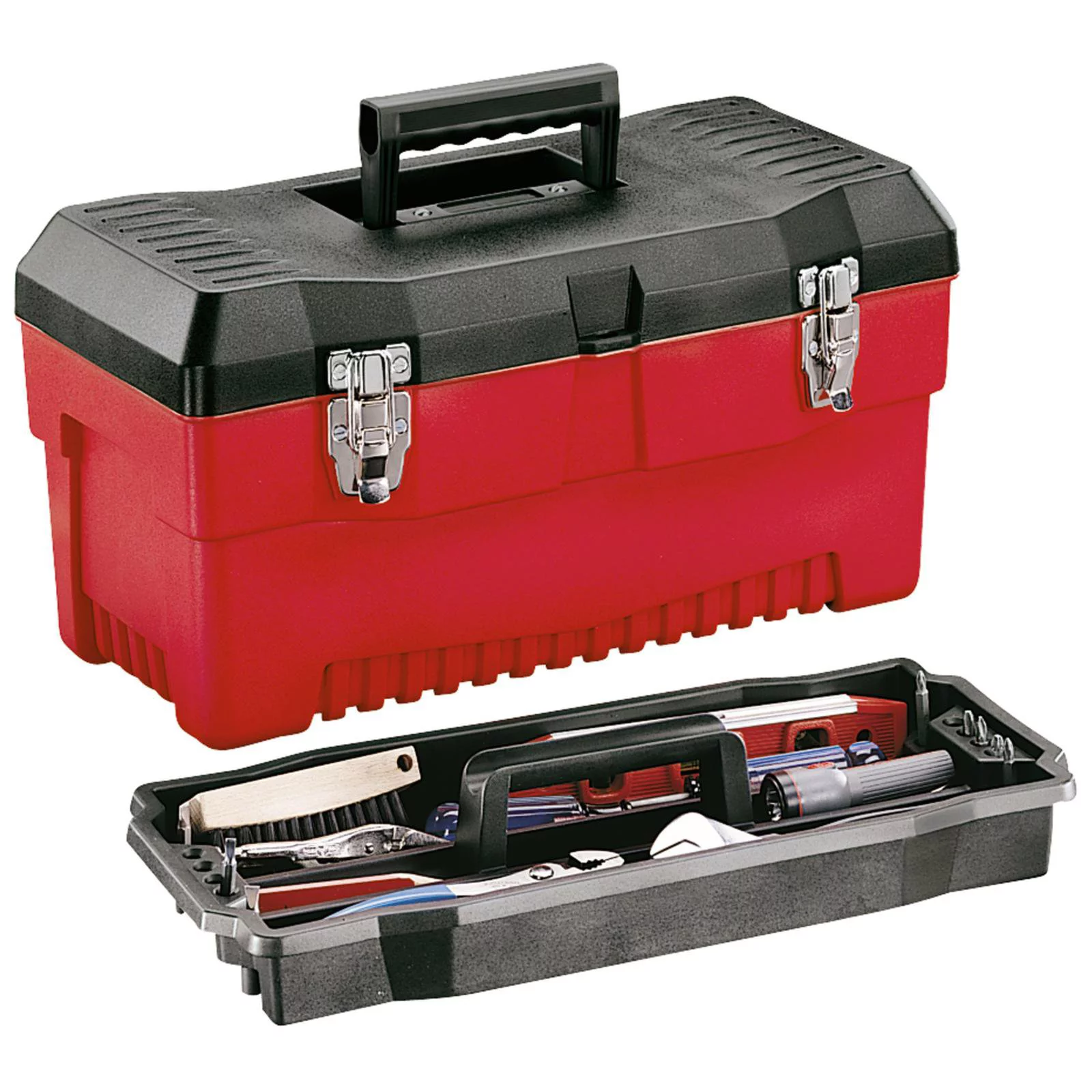
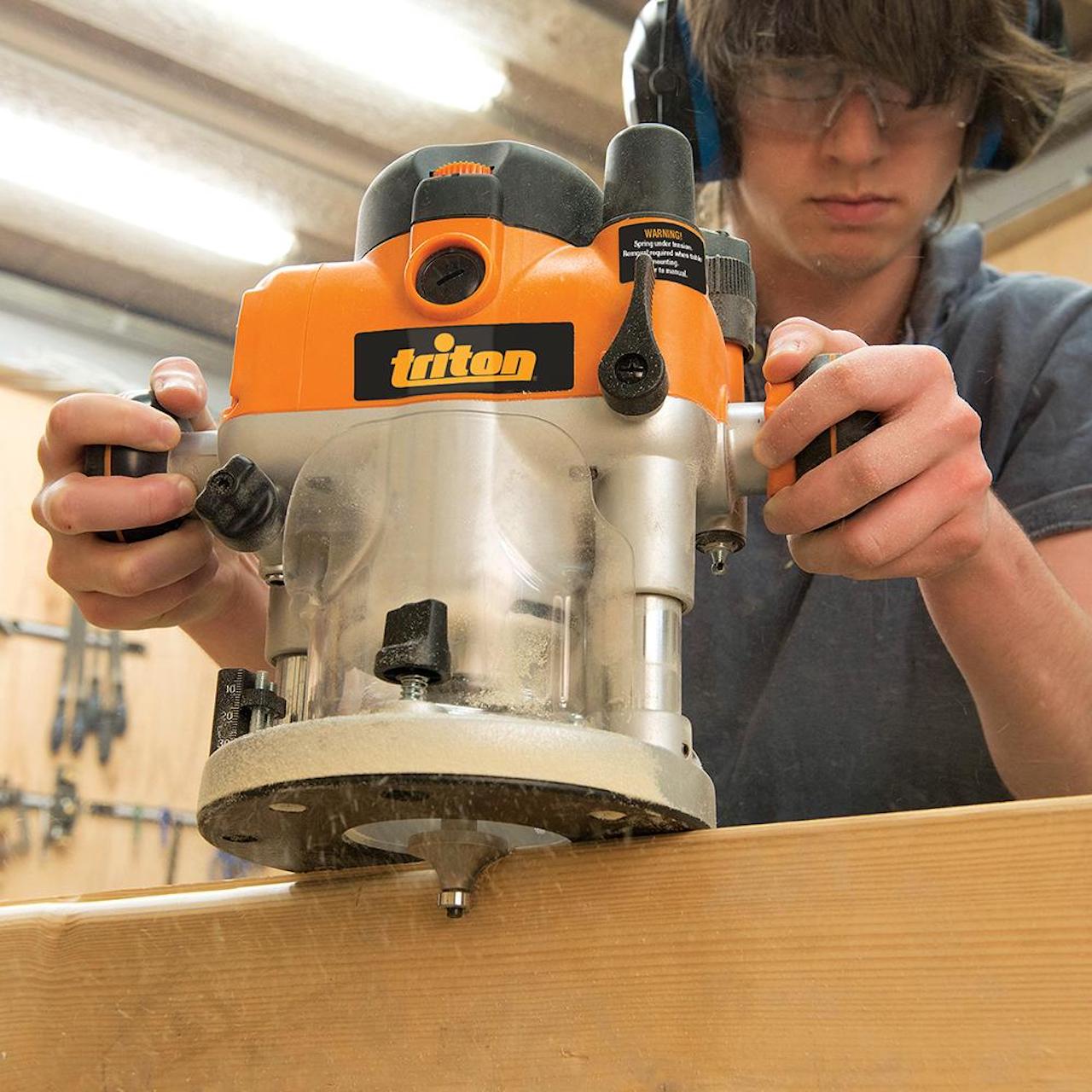
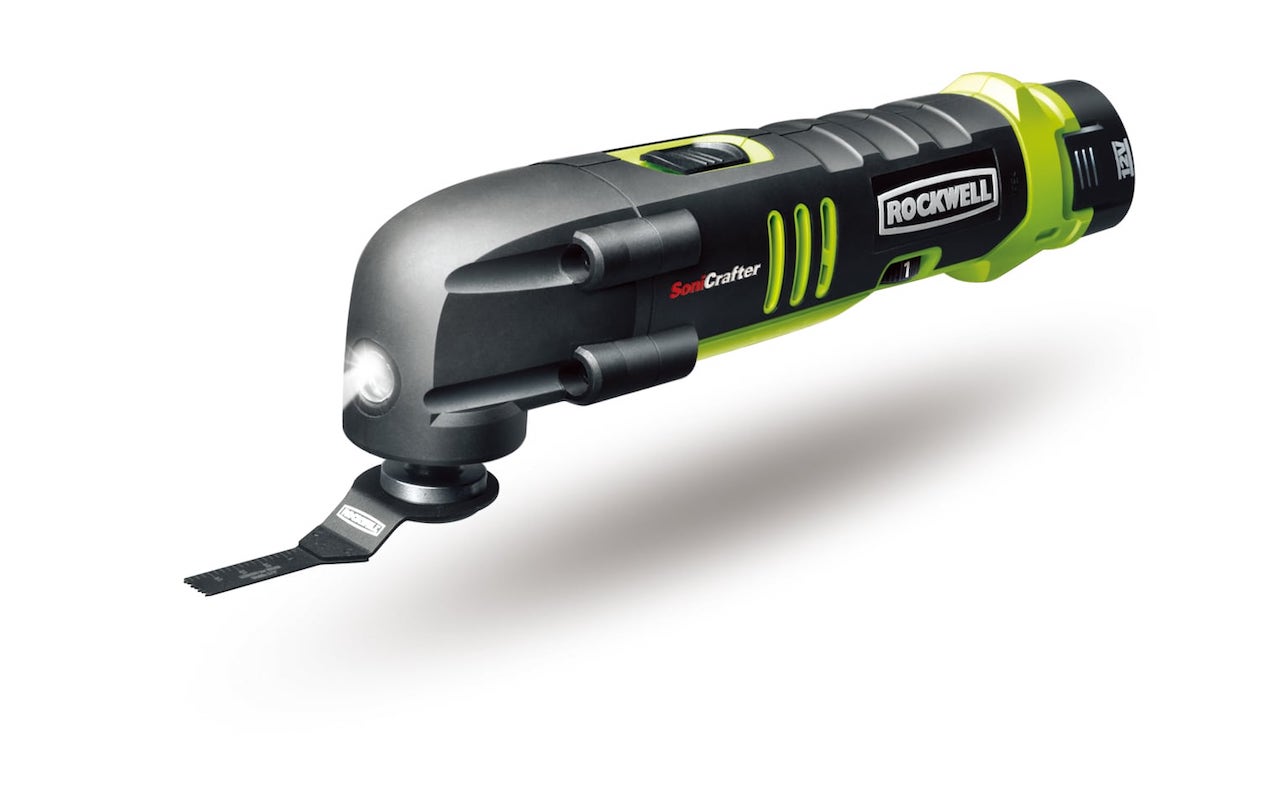

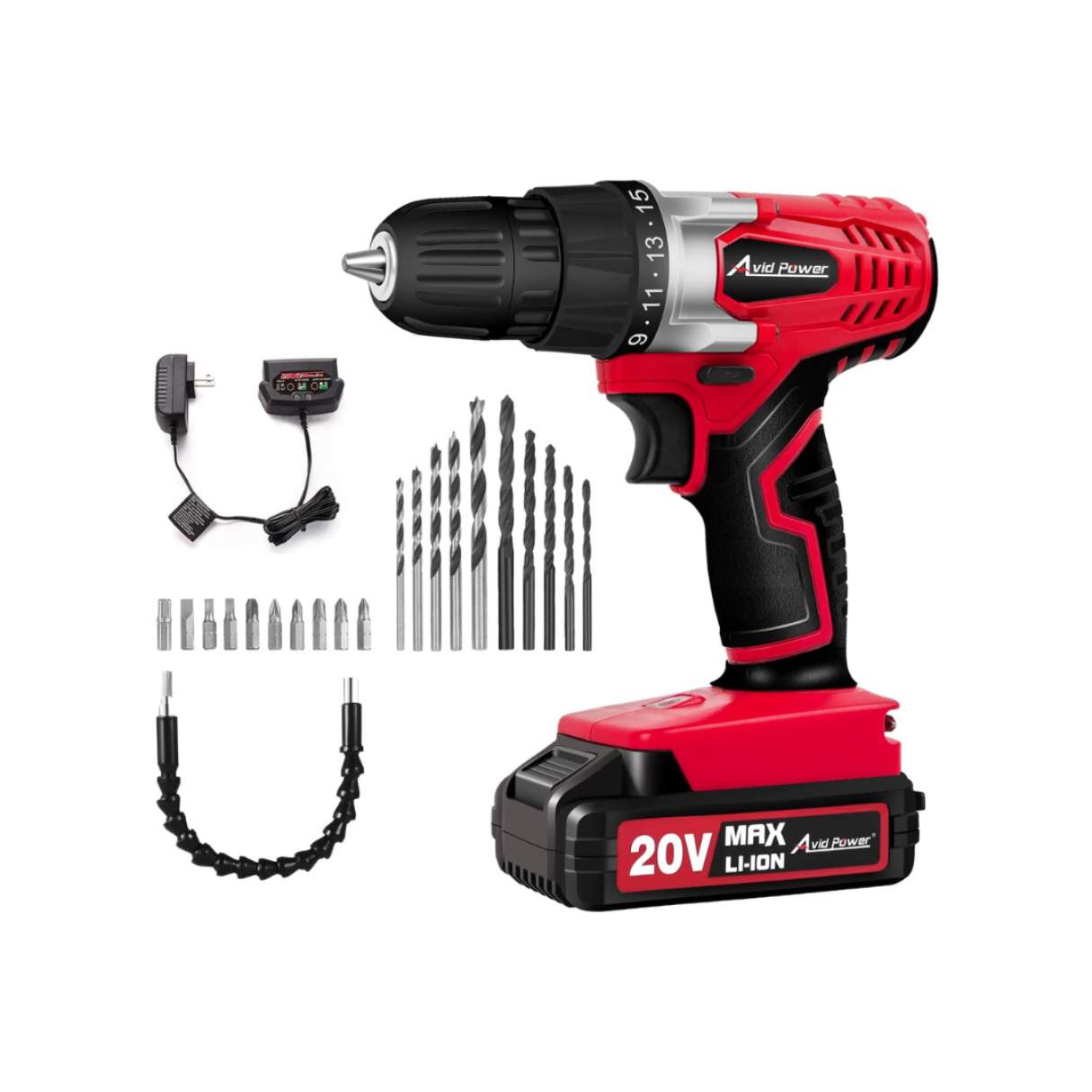
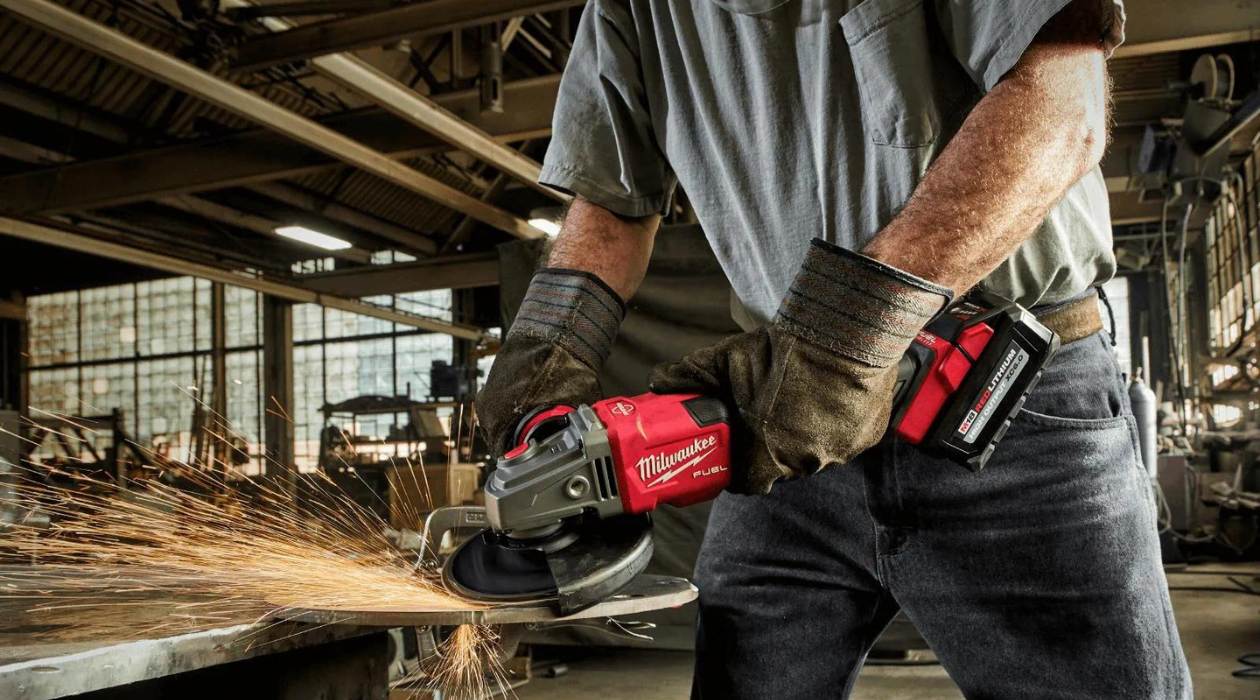
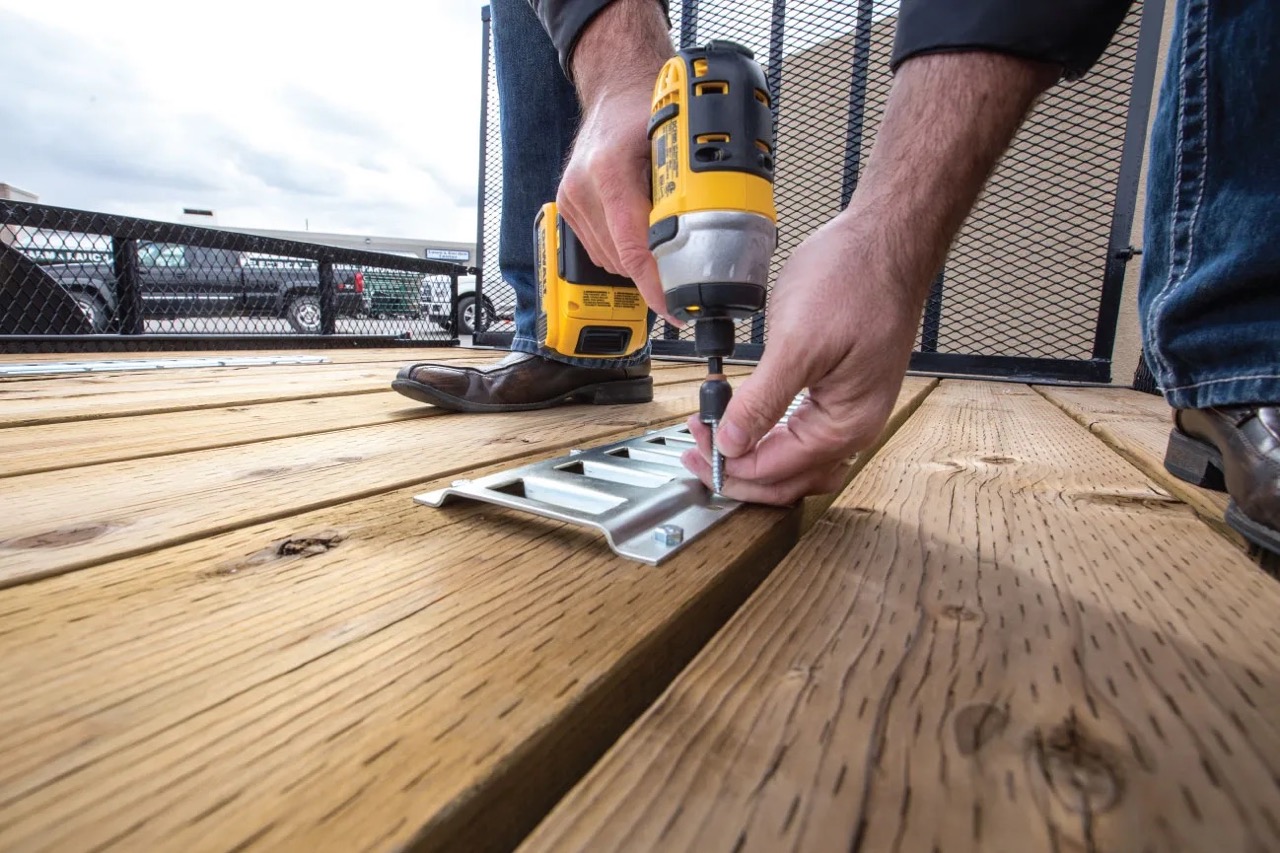
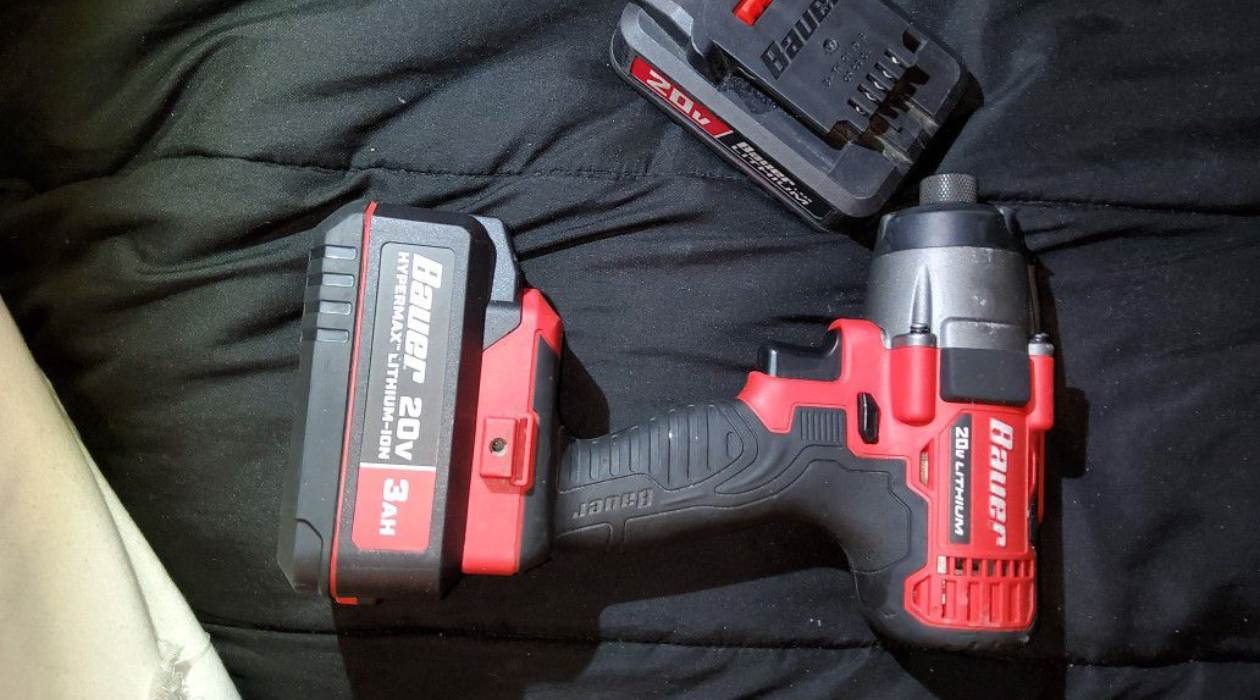
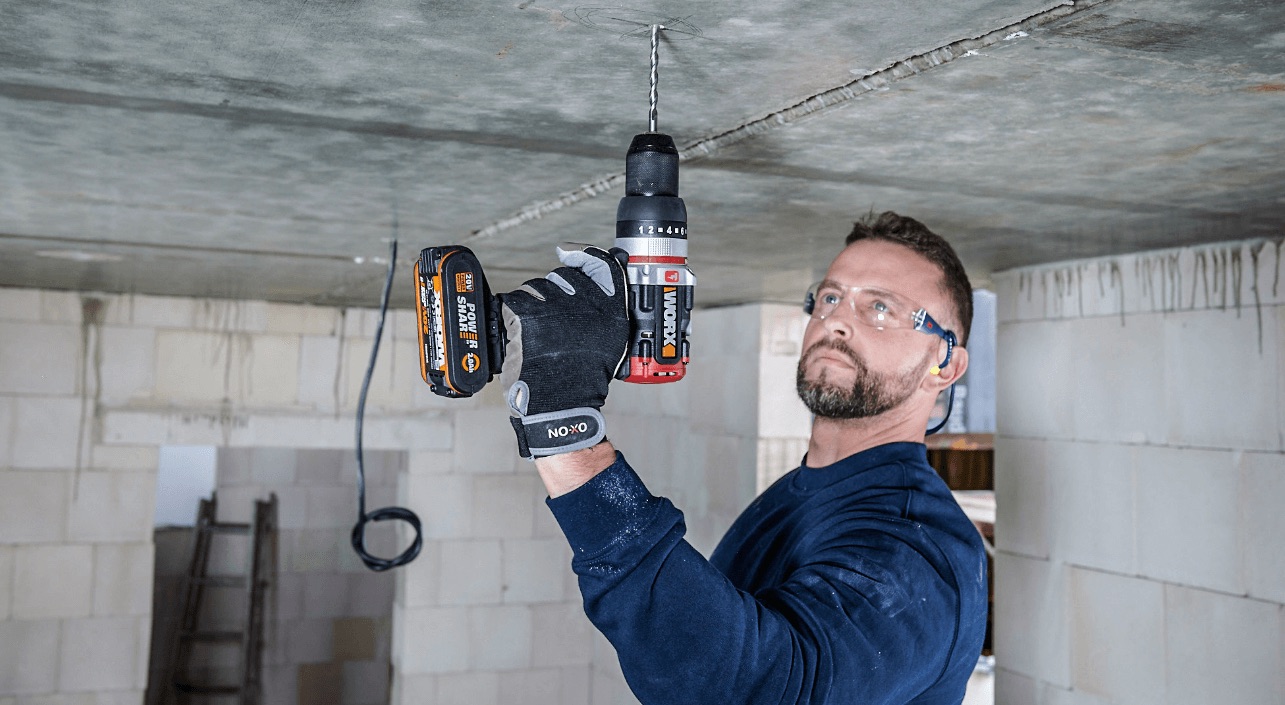

0 thoughts on “Beginner-Friendly Power Tools To Buy First”